Rivers have long played an important role in history. Not only have they provided animals in the region with water to drink and hydrate, but also food for them to eat. The wildlife living in the rivers has also benefited from rivers, too. As humans evolved, they also realized rivers were an important natural feature. Humans received nourishment — both liquid and sold — from rivers.
Rivers were also important to tribes, countries, and other powers in ensuring they could defend themselves from enemies. They could have access to oceans and seas and ensure trading with others, proving that rivers are one of the most useful bodies of water.
In Spain, the rivers have provided the Spanish with all of that and more. Let’s take a look at the nine most important rivers in Spain. We’ll go more into detail and give you fun facts, too.
Ebro

The Ebro River has the biggest discharge of any river in Spain.
©Boerescu/Shutterstock.com
Arguably, the Ebro River is the most important in Spain. It is located in the northern and northeastern parts of the country and flows into the Mediterranean Sea. Although it is not the longest river in Spain, it is the longest one (at 580 miles) that is located in its entirety in the country. The Tajo River is in both Spain and Portugal.
The Ebro passes through many cities on its way to the sea including Zaragoza. Its drainage system contains an abundance of wildlife. The Ebro Delta Natural Park houses eight plant species and 69 vertebrae. A total of 95 species of birds nest or migrate to the delta region of the river.
Throughout history, the Ebro has been used for securing Spain militarily and ensuring Spanish power, as well. During the Spanish Civil War, the longest and largest battle took place along the river and it was known as the Battle of the Ebro. The Ebro has been valuable in creating pacts of trade, as well.
Duero
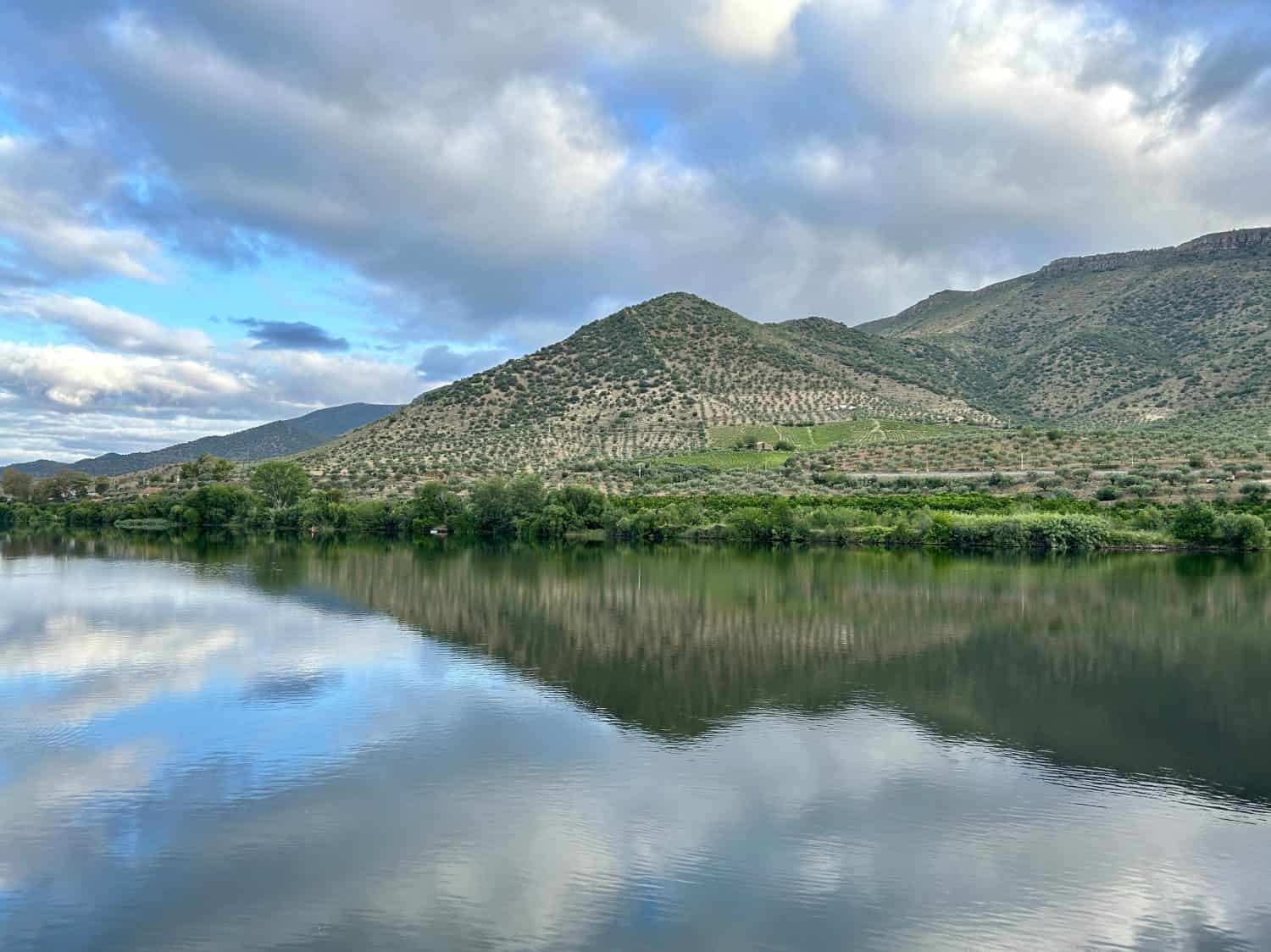
Romans believed the Duero River was a god called Durius.
©Well Lived Imagery/Shutterstock.com
The Duero (or Douro) River is a major river in the Iberian Peninsula. It starts in Duruelo de la Sierra, Spain, and flows into Porto, draining into the Atlantic Ocean. The Duero is the third-longest river in the Iberian Peninsula and has long provided people living in the area with natural resources and water for agriculture — mainly the production of olives, grapes, and almonds.
It also has been a tourist haven, ensuring many tourist monies in the Spanish and Portuguese economies. The drainage basin was also deliberately unpopulated so that the Asturian kingdom under Alfonso I could easily be defended and see attacks if they came.
Tajo
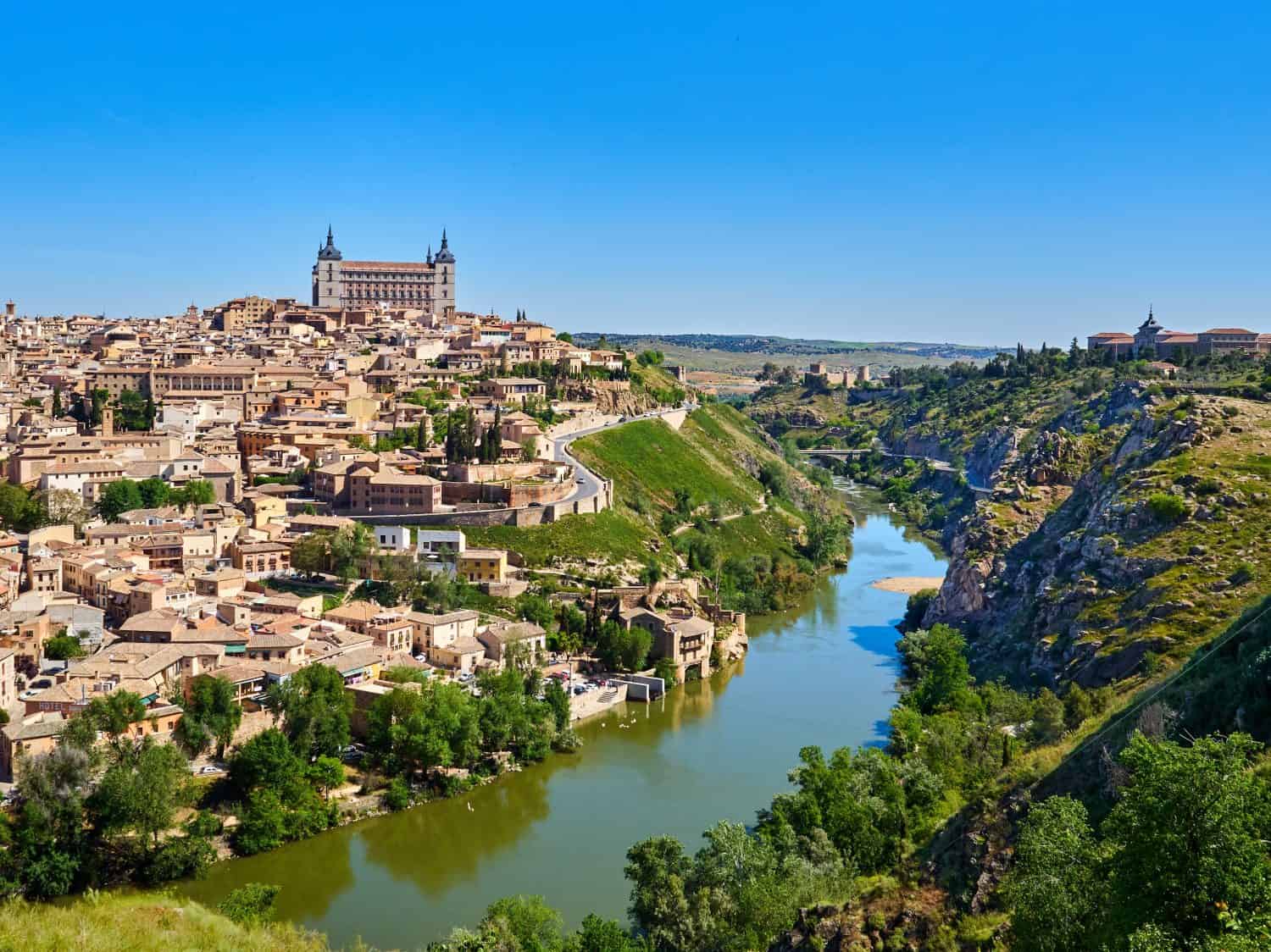
Important for both the Spanish and Portuguese, the Tajo River has been featured in many Portuguese stories and songs.
©Susana Photography/Shutterstock.com
The Tajo (or Tagus) River is an extremely important river in the Iberian Peninsula. Not only is it the longest river in the peninsula (at 626 miles), but it also provides drinking water to millions of Iberians and has been a powerhouse for both the Spanish and Portuguese military. It starts in Fuente de Garcia, Spain, and drains into the Atlantic Ocean in Lisbon. The river provided a waterway to the Atlantic that protected Lisbon, as well as the Spanish empire, from enemy invasions.
Guadiana
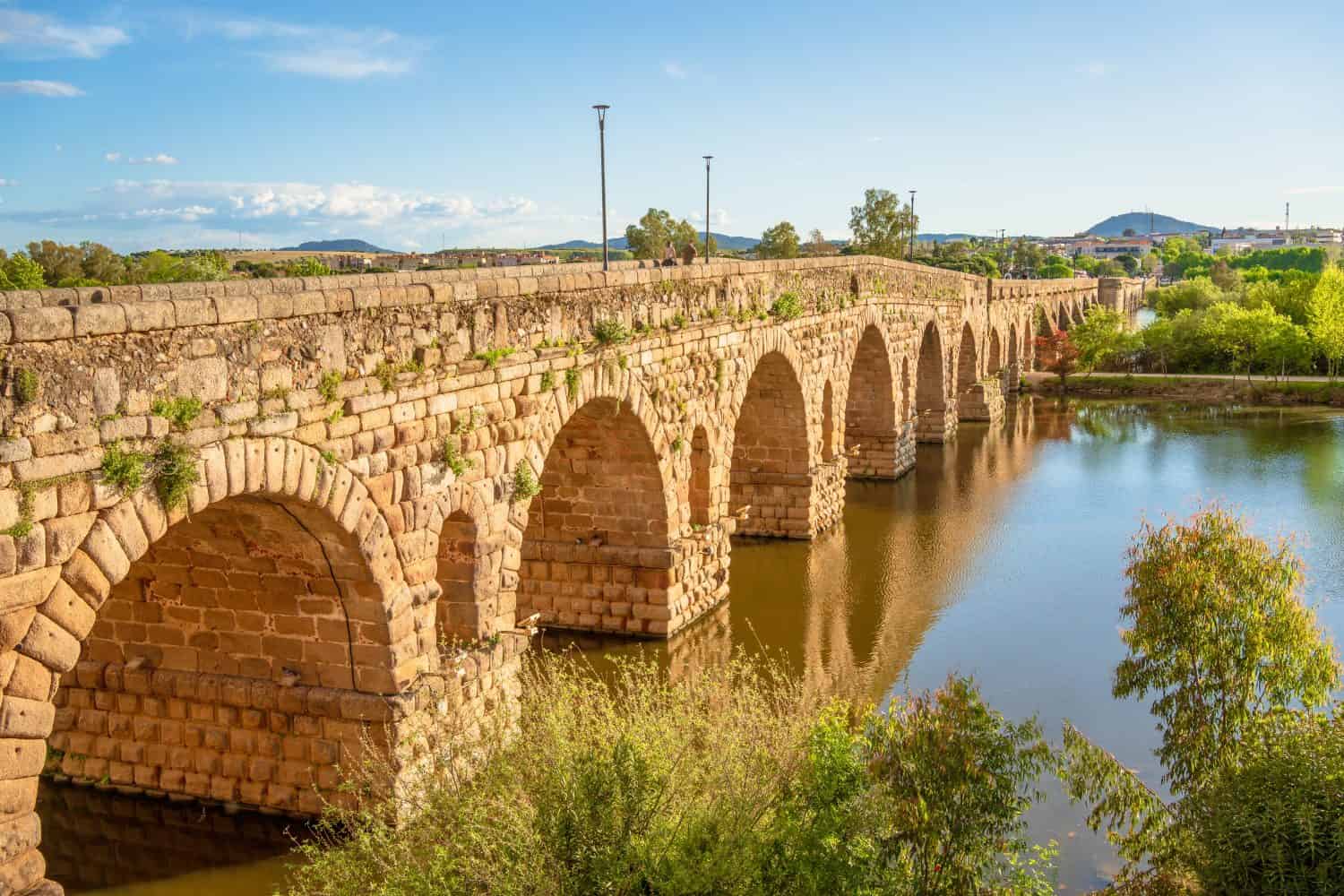
The Guadiana River creates a natural border between Spain and Portugal for several miles.
Guadalquivir means “big river” in Arabic.
©SerFF79/Shutterstock.com
This river spans an international border between Spain and Portugal. It is the fourth-longest river in the Iberian peninsula (at 483 miles) and it drains into the Gulf of Cadiz. The Alqueva Dam, in the southern part of the river, is the largest reservoir in Western Europe. Around the Gulf of Cadiz, there is an estuary that is home to an abundance of wildlife.
Guadalquivir

Guadalquivir means “big river” in Arabic.
©BearFotos/Shutterstock.com
The Guadalquivir River is one of the most important rivers in Spain and currently the only navigable river, as well. As such, it was a significant river because of its direct entrance and exit to the Atlantic Ocean and Mediterranean Sea. The Romans made the river a port in Seville, which was expanded by the Moors. King Ferdinand III used it as a major shipyard to transport all types of materials and resources all over Europe. The river was also significant during the time of the Spanish exploration and eventual conquest of North and South America.
Jucar
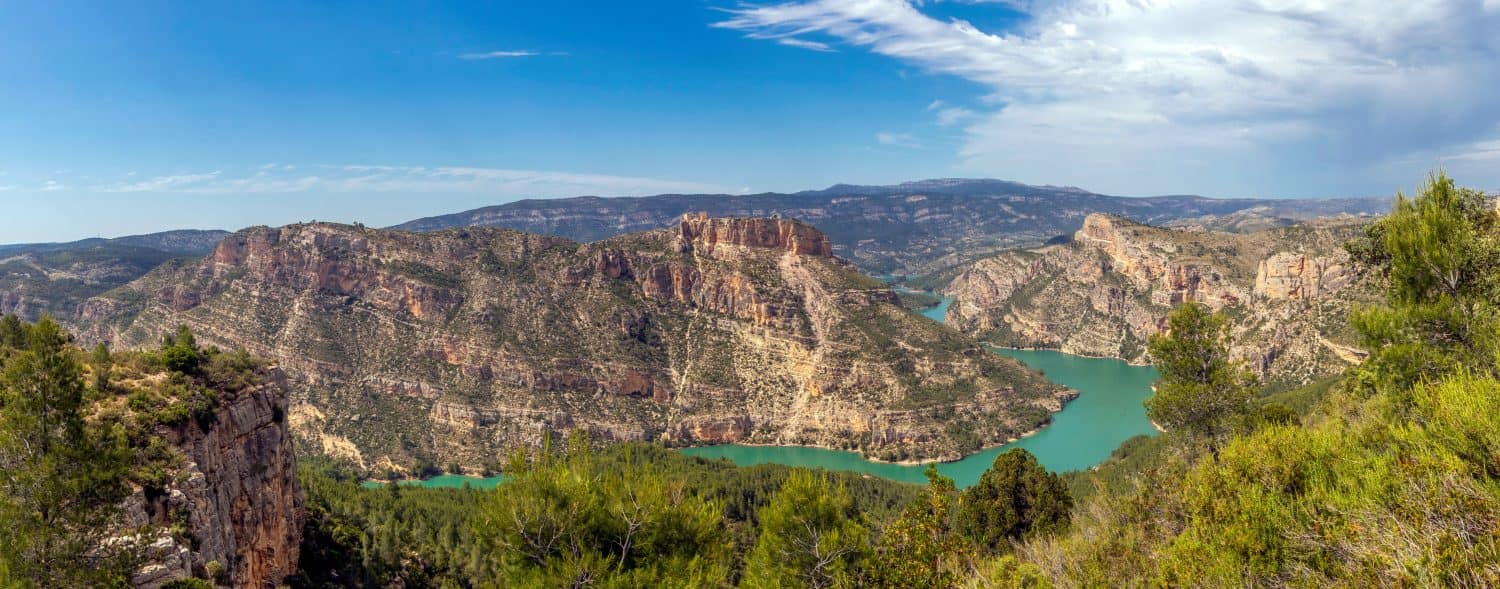
Several artists have painted the Jucar River including Aureliano de Beruete.
©Jose Aldeguer/Shutterstock.com
Located in the eastern part of the country, the Jucar River flows through several major cities and towns like Cuenca and Cullera until it reaches the Gulf of Valencia. One of the most prominent events in Spain happened in 1982 when the Tous Dam broke. The river flowed out rapidly and caused massive destruction, including killing more than 30 people. It is the biggest flood in Spain’s history.
Segura
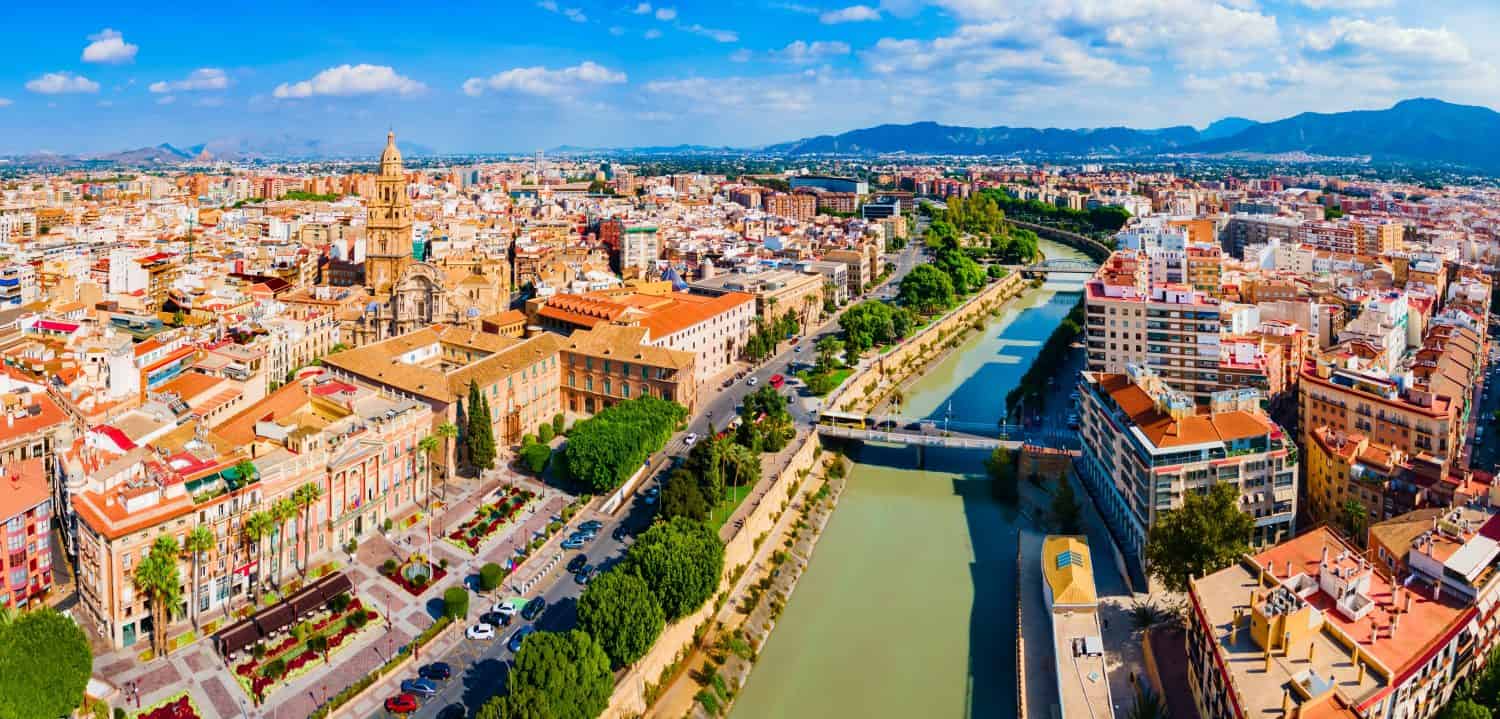
The Segura River starts in the Segura Sierra and drains into the Mediterranean Sea.
©saiko3p/Shutterstock.com
Located in southeastern Spain, the Segura River was a prominent river for the local area in terms of ensuring farmland was adequately irrigated. Unfortunately, this also heavily polluted the river because of the agricultural runoff, especially around Murcia. In the early 2000s, water treatment plants were built and other facilities were to ensure the river’s cleanliness. Ten years later, the Segura River has sprung back to life.
Wildlife is thriving in the river and its surrounding regions, too. Some of the notable animals in the area are otters, eels, and trout, as well as owls, nightingales, and kingfishers. When it comes to flora, willows, elm trees, and wild rose bushes are most prominent.
Miño

There are legends about mythological creatures who lived in the Miño River that Galicians tell frequently, including that witches lived in the river and that there were creatures called Xarcos that lived there too.
©jcami/Shutterstock.com
The Miño River is located in Galicia and northern Portugal and has a length of 210 miles. The river is important as people have long benefited from the river’s water for their vineyards — which include the famous Ribeiro and Albariño wines — and agricultural farms. This has lifted the local economies of the region, including those that farm potatoes, corn, and cabbage. The river starts at Pedregal de Irimia in Spain and twirls around until it reaches the Atlantic Ocean in northern Portugal.
Manzanares

The Manzanares River was a frequent subject of painter Francisco Goya, who created paintings with Madrileños enjoying themselves along the river.
©Sergii Figurnyi/Shutterstock.com
This list could not be complete without including the Manzanares River that passes through the Spanish capital, Madrid. The Manzanares is small (only 57 miles), but it is extremely important. The Moors founded Madrid overlooking the river as a citadel to protect their empire. The Manzanares River also played a key role in the Republican defense during the Spanish Civil War. Republicans defended Madrid time and time again during the civil war, even though in the end they were not successful, and Nationalist forces took the capital city (and eventually won the war).
The Manzanares River was heavily dammed to pave the way for Madrid’s growing population, but in the past 20 years, the government redid the M30 highway, did away with the dams, and let nature take its course. They have also revitalized the area along the river and now the river is home to many animal species.
Conclusion
And there you have it, those are the nine most important rivers in Spain. These rivers have influenced the course of history. Whether it was securing victories in military battles or providing people with valuable natural resources, these rivers were extremely important for Spanish people all over the country. With the ongoing climate change crisis, these rivers are becoming shallower. Some rivers are even disappearing right in front of our eyes. The droughts that have ravaged Spain are no joke and climate change is to blame. Spain is tackling the problem and hopefully, there will be a solution in the near future before it’s too late.
Top 9 Most Important Rivers in Spain
| River | Length |
|---|---|
| Ebro | 580 miles |
| Duero | 557 miles |
| Tajo | 626 miles |
| Guadiana | 483 miles |
| Guadalquivir | 408 miles |
| Jucar | 316 miles |
| seguro | 202 miles |
| Miño | 220 miles |
| Manzanares | 57 miles |
The photo featured at the top of this post is © Nobilior/iStock via Getty Images
Thank you for reading! Have some feedback for us? Contact the AZ Animals editorial team.






